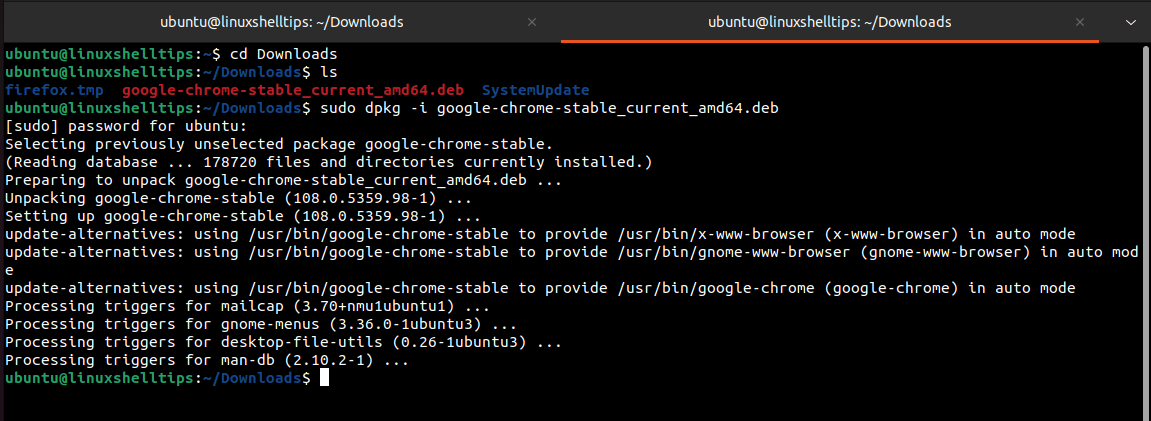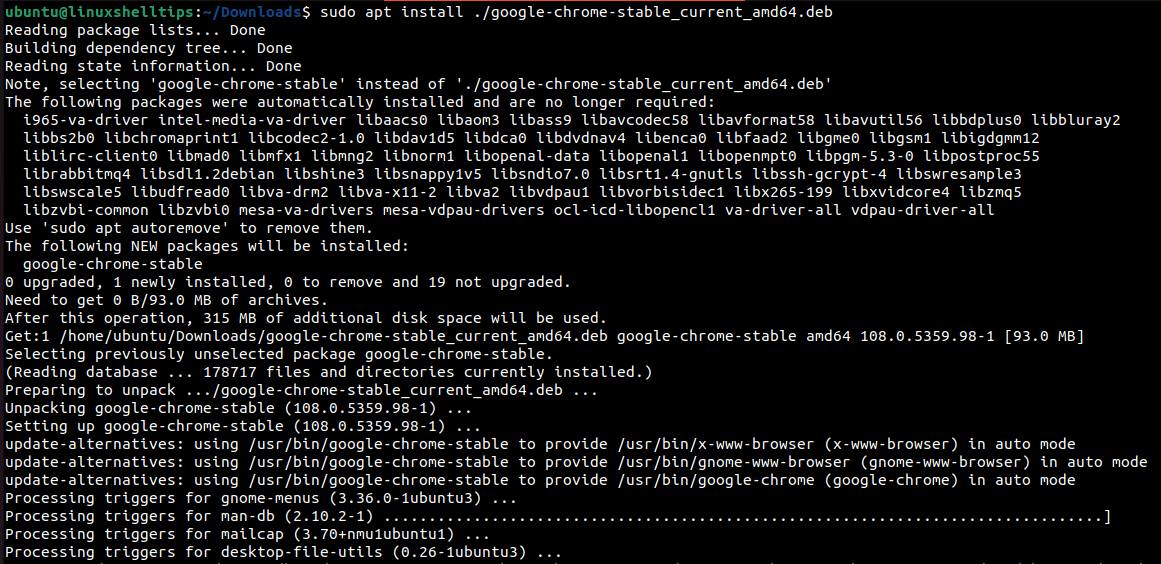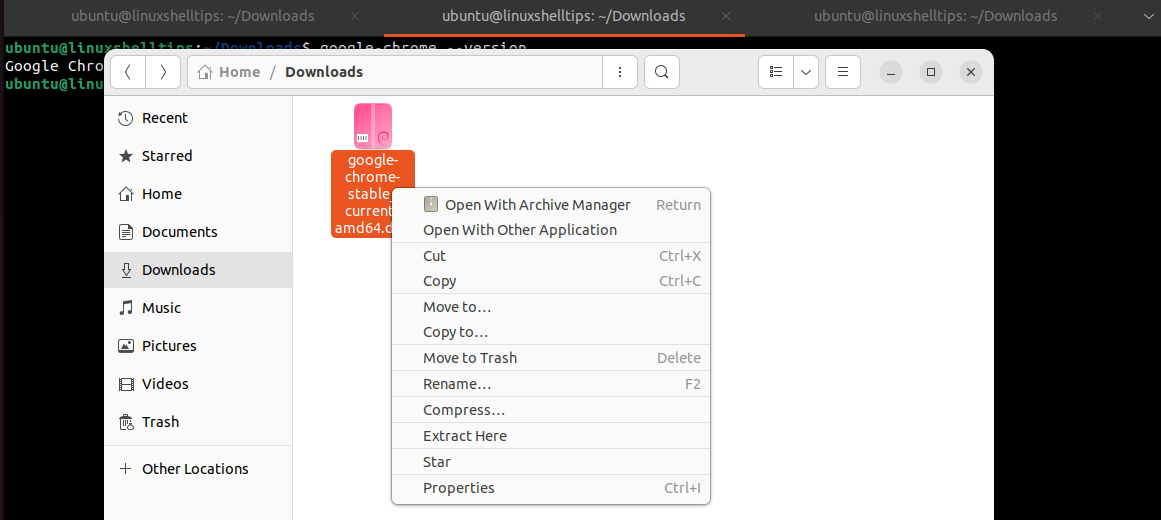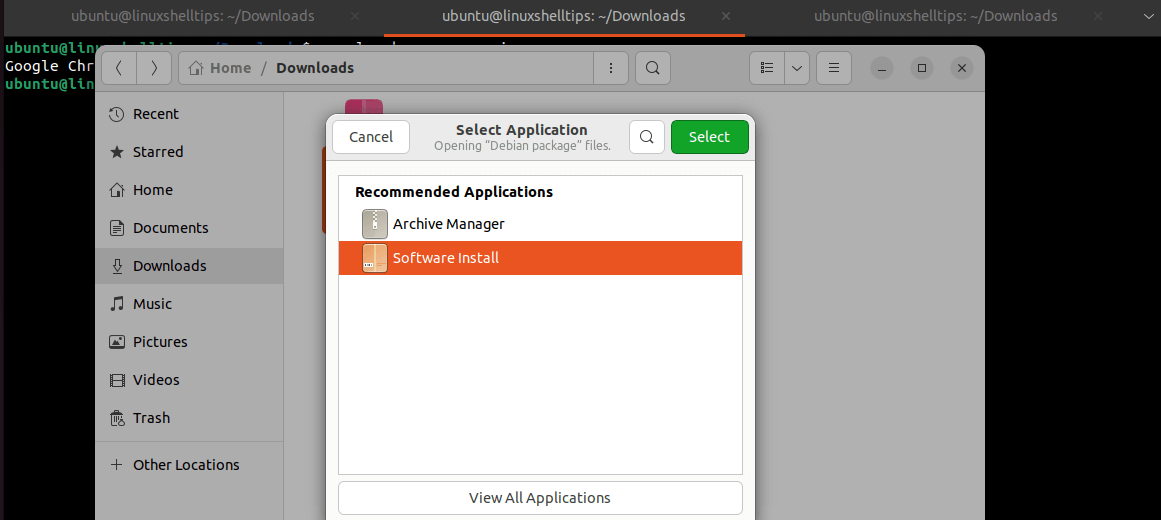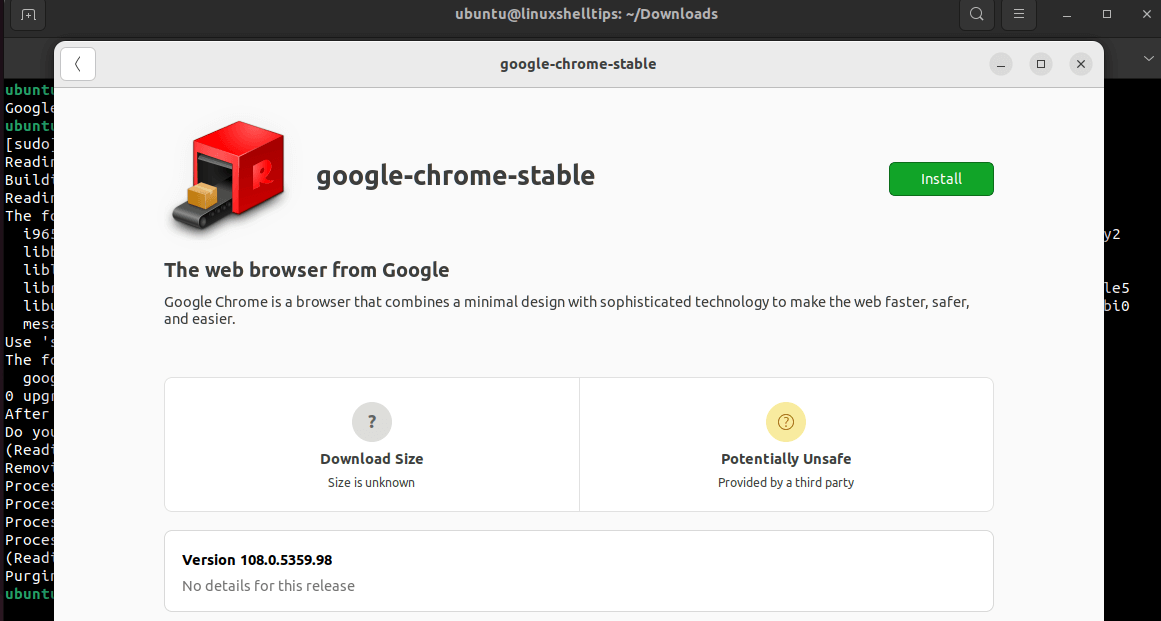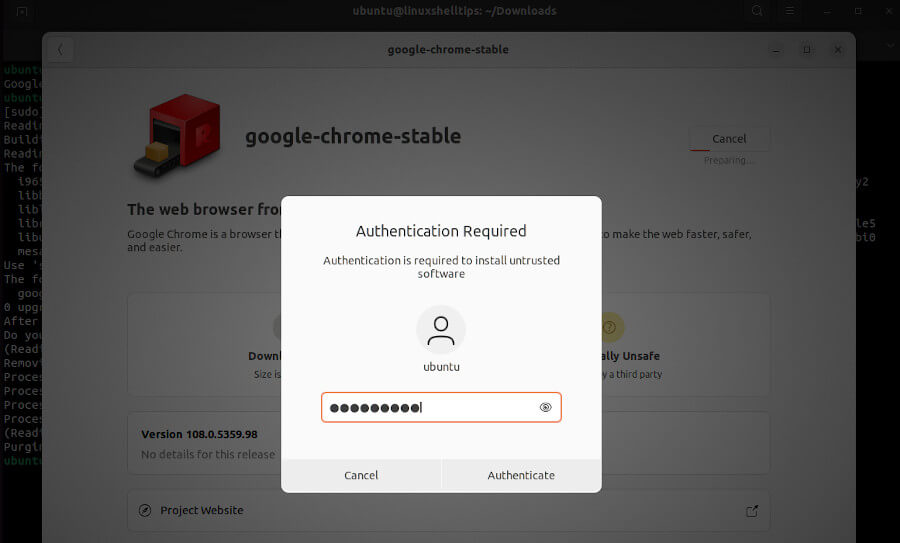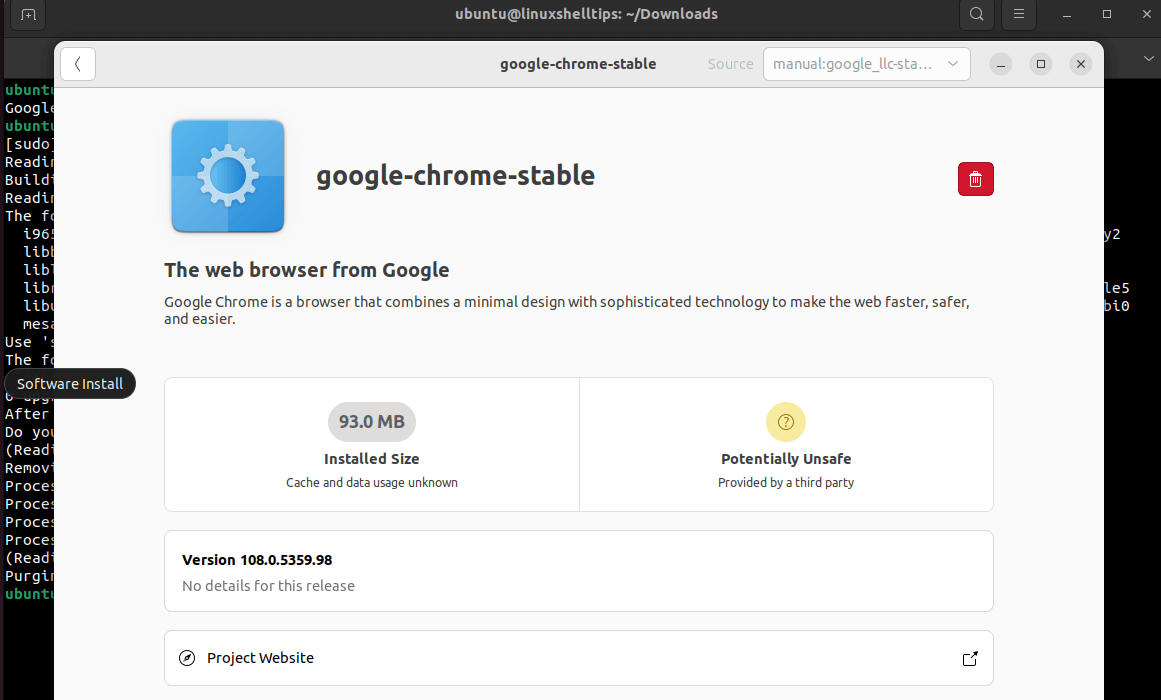- Package install linux mint
- How to Install Deb Files in Ubuntu, Mint and Debian
- Installing Deb Package on Ubuntu, Mint, and Debian
- 1. Using the ‘dpkg’ Command
- 2. Using the apt Command
- 3. Using a Graphical Package Manager
- Remove Deb Packages in Ubuntu, Mint, and Debian
- Remove Deb File with Configuration Files
- Remove Deb File without Configuration Files
Package install linux mint
There are several ways of installing softwares in linux and they are described in many tutorials. this tutorial will cover most of the processes of installing softwares in a linux system.
Online installation:
#1. Through software manager(linux mint)/software center(ubuntu):
first open the terminal and run this command to get the latest version of the software:
sudo apt-get update
1. open software manager/center. it’s in the menu.
2. search your desired software in the search box
3. if it’s in the list then it will appear before you . if it’s not in the list follow the instructions in the ppa installation section of this tutorial.
4. now double click on the desired software entry and then click «install«.
5. it will be installed on your system as per your network connection speed.
#2. Through synaptic package manager:
if it is absent in your linux distribution then you will have to install it through software manager/center first.
to me it’s the best way to install softwares in linux.
1. open synaptic package manager . click reload to get the latest version of the softwares.
2. search your desired software/s in the search box.
3. right click each software you want to install and mark them for installing. it will mark additional dependencies on it’s own.
if your softwares not in the list follow the instructions in the ppa installation section of this tutorial.
4. after marking for installing, click apply
6. it will download and install the marked softwares.
if you have a list of softwares then save the file with the list, with .list extension (this file should contain the exact package name one at every line with an extra string «install» included after each package name preceding by an space/tab). then go to file->read markings and then brows to the file and open it. synaptic will mark the softwares in the list automatically.
if you know the exact name of the software then you can install it through terminal by simply entering the command:
sudo apt-get update (to get the latest version)
sudo apt-get install software-package-name
if it says «unable to locate package. » then follow the instructions in the ppa installation section of this tutorial.
if your software’s not in the software list then it may come from private package archives (PPA’s).
these are private development of softwares so use it at your own risk.
1. search google for the ppa address for your software. (like ppa for package-name)
2. then add it to the repository by entering this command in terminal:
sudo add-apt-repository ppa. whatever_it_is
3. then run this command (must)
sudo apt-get update
4. now your desired software is in the list. so you can follow one of the above processes (#1,#2,#3)
Offline installation:
say, you downloaded your desired softwares from some website. in this case if you don’t trust the origin of the software then don’t install it or install it at your own risk.
Your downloaded softwares may come as a .zip, tar.gz, tar.bz2, .deb, .rpm, .tgz, tar.xz or any other types of archives.
if you are in linux mint or in ubuntu or in a debian based OS try to download .deb packages because it’s easier to install in debian based OS.
#5. installing .deb packages:
cd path_to_the_directory_that_contains_the_.deb_file
sudo dpkg -i filename.deb
through gdebi package manager:
if gdebi is not installed then you have to install it through one of the processes #1,#2,#3 (requires internet connection)
1. then double click on the .deb file or open the file with gdebi package manager and click install.
2. it will be istalled soon.
#6. installing .rpm packages:
rpm has to be installed in the system, otherwise follow one of the processes #1,#2,#3 to install rpm (requires internet connection)
cd path_to_the_directory_that_contains_the_.rpm_file
sudo rpm -i filename.rpm
#7. installing from archives(.zip tar.gz. etc):
these archives generally conatains the source of the package. each of them generally has a different approach to install. I will be discussing a common method which will supposedly work for all of them.
As these archives contains the source, your system needs the required programming languages to compile and build the source. so the general requirement packages stated above may not be sufficient for you. in that case you have to install the required packages through one of the processes #1,#2,#3 (requires internet connection). you can know about the dependencies about your software in a readme file included in the archives.
1. open the archives with archive manager by double clicking it, then extract it.
cd path-to-the-extracted-folder
3. inside the extracted folder look carefully.
a. if you find a file named configure then :
sudo make install
if the first code fails to execute then run this code before above codes:
chmod +x configure
b. if you find a file named install.sh then
chmod +x install.sh
./install.sh or sudo ./install.sh (if it needs root permission)
or you can double click it and select run in terminal or simply run
N.B : sometimes there is a file, something like your_software_name.sh is found instead of install.sh. for this case you have to replace install.sh with the correct name in the previous codes.
c. if you find a file named install then
chmod +x install
./install or sudo ./install (if it needs root permission)
or you can double click it and select run in terminal or simply run
d. if you find a file named make (if there is no configure file) then
sudo make install
e. If you still can’t find the required files
then it may be in a special folder (generally in a folder named ‘bin’). move to this folder with cd command with appropriate path and then look again and follow the same process.
some packages are archived as pre installed packages i.e you don’t have to install them , you just need to extract them in a secure place and theres an executable file (name is generally same as the software name) in the extracted folder or in child folders like bin,build etc. you have to find it and make it executable.
Example: eclipse, adt bundle (android developing tool)
chmod +x filename_with_exact_path
or double clicking it and selecting run in terminal or run, whatever supports your software.
some softwares come with a .sh file to install it
chmod +x filename.sh
./filename.sh or sudo ./filename.sh (if it needs root permission)
or double click it and select run in terminal or run, whatever supports your software.
some softwares come with a .run file to install it
chmod +x filename.run
./filename.run or sudo ./filename.run (if it needs root permission)
or double click it and select run in terminal or run, whatever supports your software.
Additional info about offline installation:
Often, softwares generally have a lot of dependencies. You need to download all of them, which sometimes can be very difficult and tiring. for this you can follow the instructions here which will save your time and effort.
for adding an entry in the menu for your newly installed software you can see my other tutorial:
W: The first three online methods are the safest way to install a software. For other methods you have to take risks of potential damage of your system or software dependencies.
N.B: A well formatted copy of this tutorial can be found here. (This link may change)
How to Install Deb Files in Ubuntu, Mint and Debian
Before we look at the different approaches to installing deb files on Ubuntu or Debian-based Linux distributions, we first need to understand them.
Debian, Ubuntu, and Linux Mint distributions support the use of a package file with a ‘.deb’ file extension, which contains the needed metadata, scripts, and files that are crucial in the installation and management of targeted Linux-supported software packages.
The Debian Project developed the ‘.deb’ file format as a standard software package distribution format. By conceptualizing a ‘control file‘, the targeted software package is enriched with metadata info like name, version, dependencies, and installation scripts associated with the software package in question.
Installing Deb Package on Ubuntu, Mint, and Debian
There is more than one approach to installing ‘.deb’ files on Ubuntu and Debian-based Linux distributions as explained in the following steps.
1. Using the ‘dpkg’ Command
The dpkg command is used to install, manage, and remove ‘.deb’ software packages along with their dependencies if any as shown.
The -i flag in the command above triggers the installation of the google-chrome .deb file.
Once installed, you can confirm the installed version of the ‘.deb’ software package using the dpkg-query command.
$ sudo dpkg-query -l google-chrome-stable
2. Using the apt Command
The apt command is effective in managing packages (install, upgrade, and remove) since it is the default package manager. This approach of installing a ‘.deb’ file automatically caters to the download and installation of missing dependencies. Also, ‘.deb’ packages installed via this approach are automatically upgraded during the next system update.
To install a ‘.deb’ file using ‘apt’, implement the following command:
Once installed, you can confirm the installed version of the ‘.deb’ software package using the apt command.
$ sudo apt list -a google-chrome-stable
3. Using a Graphical Package Manager
A Graphical Package Manager is an ideal alternative to install Deb files on Ubuntu and Debian-based systems. Their user-friendly interface makes it easy to install, manage, and upgrade packages as shown.
To install Deb packages via the default Graphical Package Manager, consider the following installation steps:
Right-click on the targeted ‘.deb’ file.
Select the ‘Open With Other Application‘ option and choose the ‘Software Install‘ option.
Next, click on the ‘Select‘ button and wait for the application details to load. You should see an ‘install‘ button for installing the selected software package.
Click on it and provide a Sudoer user password for the installation to proceed.
After a while, the software package should be installed.
Remove Deb Packages in Ubuntu, Mint, and Debian
Before uninstalling a ‘.deb’ file, we need to be certain of its exact program name. For instance, for Google Chrome, we will run the following command:
From the above output, we can use the exact program name for Google Chrome (google-chrome-stable) software to uninstall it if necessary.
Remove Deb File with Configuration Files
Fully uninstall a Deb file together with its configuration files using the dpkg or apt command.
$ sudo dpkg -P google-chrome-stable OR $ sudo apt purge google-chrome-stable
Remove Deb File without Configuration Files
To uninstall a Deb file without removing configuration files, use the dpkg or apt command.
$ sudo dpkg -r google-chrome-stable OR $ sudo apt remove google-chrome-stable
Conclusion
The ‘.deb’ file format plays a crucial role in Debian-based distributions such as Ubuntu and Linux Mint. For instance, its existence makes it convenient and efficient to distribute and install targeted software packages on these systems.
If you have any questions on how to install and remove Deb files on Debian-based distributions, feel free to leave a comment.
